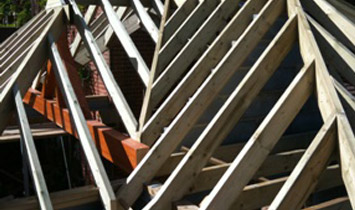What Are Building Regulations?
The Building Regulations is a statutory instrument enforceable by law which lays down minimum standards of construction for all types of buildings and covers such matters as:
- Damp proofing/Weather resistance
- Structural Stability
- Sound Insulation
- Ventilation
- Sanitary appliance/conveniences
- Drainage
- Stairs/Ramps
- Energy Conservation
- Access and use of Buildings
- Glazing
The Building Regulations apply to:
- The erection of a building
- The extension of a building
- A “material alteration” of a building which includes such works as underpinning and internal structural alterations and any works which would adversely affect the means of escape in case of fire
- The installation of controlled fittings e.g. sanitary and heating appliances and replacement windows and external glazed doors
- The change of use of a building
- The installation of cavity wall insulation

Building Regulations Approval is not required for:
- Detached garage – provided its floor area is no more than 30 sqm, it is of a single storey construction and it is either situated 1m or more from the boundary or built substantially of non-combustible materials or alternatively its floor area is no more than 15 sqm.
- Carport – provided its floor area is no more than 30 square metres and it is open on two or more sides.
- Porch – provided the floor area is no more than 30 square metres, the dwelling entrance door is retained and any glazing complies with Building Regulation N1.*
- Conservatory – provided its floor area is no more than 30 square metres, any doors or windows separating the dwelling from the conservatory are retained and its roof and walls are glazed with transparent or translucent materials which comply with Building Regulation N1.*
- Small buildings – provided they contain no sleeping accommodation, are single storey, the floor area is no more than 30 square metres, and they are either situated at least one metre from the boundary, or are single storey and constructed substantially of non-combustible material. A detached building includes a garden shed, which is exempt providing the floor area is no more than 15 square metres.
- The installation of cavity wall insulation.
*Regulation N1 relates to safety glazing in critical locations
Building Regulation Plans
We provide very clear and precise details and specifications that help the Building Control Surveyor check and Approve the plan for Building Regulations Consent.
For the Local Authority to issue a Building Regulation Approval Notice, plans must contain sufficient information for the Building Control Surveyor to check them against all the relevant requirements.
The Regulations are becoming more involved and complex as time goes on. The main driving force of the changes is climate change and reducing the carbon footprint. We ensure that we are up to date with any changes in the legislation and most importantly offer the most practical and cost effective solutions.

Insulation
If there is one element that has made building work more complex it is insulation. Insulation if poorly detailed can, create damp penetration, a fire hazard, reduce sound insulation, overheat electrical cables and cause condensation. The regulations take this all into account but offer very few practical solutions. We take pride in our clear details that comply with the current robust details. Sometimes this is very simple, but with the more fashionable vaulted ceilings and recessed lighting the detail will become complex.
We try, wherever possible to course the building or extension to help identify level problems early. Sometime where drains are shallow the insulation may need to go below the slab, in which case to prevent cold bridging the inner leaf supporting the slab should be constructed using erated concrete (min 3.5N) such as thermalite, celcon or durox.
Insulation in isolation is no big deal. However, due to our cold and wet climate, condensation is an issue and detailing to prevent it is becoming a problem. As the government continue to increase the insulation levels of building envelopes, the risk of condensation either within the construction or on the surface increases.
Drainage
Existing and new drains can create problems. Often after much thought, planning the best position for your extension in relation to how the extension looks and your functional needs, it turns out there is a drain located exactly where you want a wall. Sometimes, a re-design may be required, however, we can usually detail around the problem.


